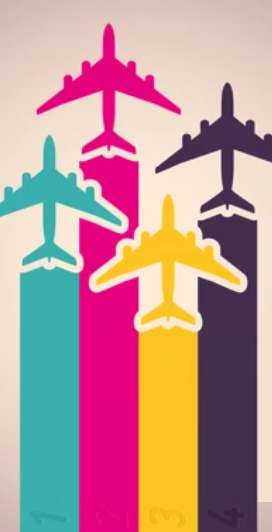Gulf Voice of Aviation
Impact of Coronavirus on Aviation Industry
The COVID-19 the Coronavirus is having a significant impact on the aviation industry due to travel restrictions and a sharp slump in demand of travel among travelers.
Flights being cancelled or planes flying empty between airports due to lack of travelers, which in turn massively reduced revenues for airlines and forced many airlines to lay off employees or declare bankruptcy. Some have attempted to avoid refunding cancelled trips in order to diminish their losses. Airliner manufacturers and airport operators have also laid off employees. According to some commentators,[1] the ensuing crisis is the worst ever encountered in the history of the aviation industry.

Flight cancellations
Government regulations in Europe and the United States mandate airlines to refund fares when flights are cancelled, but in many cases airlines have instead offered vouchers or travel credits that must be used by the end of the year. (Some airlines have extended the voucher window to May 2022.) Despite pleas from industry lobbyists to expand the regulations to allow travel credits, the US Department of Transportation has reiterated that airlines are obligated to provide refunds for cancelled flights. Travel vouchers are currently allowed when passengers cancel travel plans due to travel warnings, stay at home orders and other restrictions.
Aviation sector recorded 80% decrease in flight movements across all geographies, including America, Europe, Asia-Pacific and Middle East as of 4th May
Early March 2020 saw 10% of all flights cancelled compared to 2019. As the pandemic progressed, 40–60% fewer flight movements were recorded in late March with international flights affected the most. By April over 80% flight movements were restricted across all regions.[3] Research shows that world recovery of passenger demand to pre-COVID-19 levels is estimated to take 2.4 years (recovery by late-2022), with the most optimistic estimate being 2 years (recovery by mid-2022), and the most pessimistic estimate 6 years (recovery in 2026). Large regional differences are detected: the Asia-Pacific has the shortest estimated average recovery time of 2.2 years, followed by North America in 2.5 years, and Europe 2.7 years. For air freight demand a shorter average world recovery time of 2.2 years is predicted if compared to passenger demand. On the regional level Europe and North America are comparable with average recovery times of 2.2 years while the Asia-Pacific is predicted to recover faster in 2.1 years.

Air cargo
As passenger flights were cancelled, the cost of sending cargo by air changed rapidly. The cost of sending cargo across the Pacific Ocean tripled by late March.[5]
Adjusted cargo capacity fell by 4.4% in February while air cargo demand also fell by 9.1%, but the near-halt in passenger traffic cut capacity even deeper as half of global air cargo is carried in passenger jets' bellies. Air freight rates rose as a consequence, from $0.80 per kg for transatlantic cargoes to $2.50–4 per kg, enticing passenger airlines to operate cargo-only flights, while cargo airlines bring back into service fuel-guzzling stored aircraft, helped by falling oil prices
At the end of March, cargo capacity was down by 35% compared to the previous year: North America to Asia Pacific capacity fall by 17% (19% in the opposite direction) Asia-Pacific to Europe was down by 30% (reverse: -32%), intra-Asia was down by 35%. Lagging the capacity reductions, demand was down by 23% in March, resulting in higher freight rates: from China/Hong Kong, between March 2 and April 6, +158% to Europe and +90.5% to North America.
The cargo shortage may evaporate if the global economic crisis depresses demand: the WTO forecast a global trade contraction of 13–32% in 2020.
International mail between many countries stopped completely, either due to suspension of domestic service or lack of transportation.

10 Things In Aviation During 2050
Innovative solutions for the climate: halving CO² emissions & reducing aircraft noise
The future of the aviation industry lies in electric flying
Fuel cells and regenerative energies could make flying emission-free
Aviation industry: Future with aviation fuel from biomass & solar power
Freight and passenger numbers will continue to rise despite "flight shame"
The future of aviation - futuristic cabin interiors
Taxis of the skies - already a reality in 2050?
ARTS - We design the future of aviation
center>